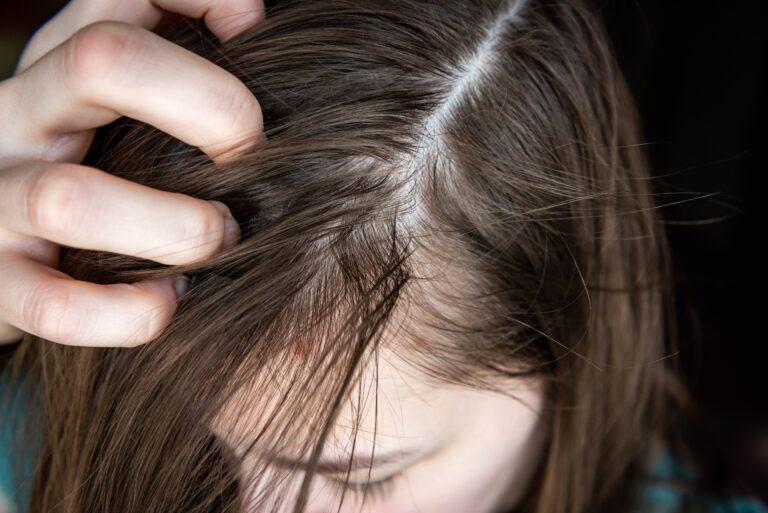Upadacitinib, a drug used to treat atopic dermatitis (AD), may induce alopecia areata, a case study suggests. |Image credit: Natalia – Stock.adobe.com
A study published in Cureus found that upadacitinib could induce alopecia areata in patients who used it for almost a year to treat atopic dermatitis. 1
Upadacitinib is approved to treat several inflammatory conditions, including atopic dermatitis, psoriatic arthritis, Crohn’s disease, rheumatoid arthritis, ankylosing spondylitis, and ulcerative colitis. Upadacitinib is a Janus kinase (JAK) inhibitor that modulates immune responses and effectively controls inflammation.
In January 2022, upadacitinib (Rinvoq) was approved to treat atopic dermatitis, which causes an itchy rash that cannot be controlled with topical medications as a standalone treatment. Upadacitinib works by blocking immune signals, inhibiting the inflammatory effects of key cytokines involved in atopic dermatitis. Atopic dermatitis. This drug selectively prevents JAK1 from causing inflammatory symptoms and itch associated with several cytokines and other pathways.
Studies have shown that this drug is beneficial for patients with moderate to severe atopic dermatitis after one year or more of continuous treatment. 3 Common adverse events include skin disorders or infections, blood test changes, and infections.
Patients with alopecia areata have a 16% higher risk of developing autoimmune diseases such as thyroid disease, vitiligo, and lupus erythematosus, which is associated with hair loss disorders4. Additionally, an average of 39% of patients with alopecia areata also have atopic dermatitis. , a subtype of eczema.
A case study evaluated a 55-year-old female patient with severe atopic dermatitis. The patient was prescribed upadacitinib at the initial dose of 15 mg per day. 1 After 3 months of consistent treatment, the dose was increased to 30 mg per day to achieve better disease control. Patients reported significant improvement in their atopic dermatitis symptoms.
Almost 1 year (11.7 months) after upadacitinib treatment, the patient reported the development of two circular patches of hair loss on the scalp despite no history of alopecia areata. Subsequent hair loss in the patient was treated with intralesional injection of triamcinolone 5 mg/mL.
The development of hair loss on upadacitinib treatment is significant because JAK inhibitors are FDA-approved treatments for this condition. However, upadacitinib has a narrower coverage compared to other JAK inhibitors approved for alopecia areata, such as litrecitinib and baricitinib. Upadacitinib inhibits JAK1, whereas litrecitinib inhibits JAK3/TEC kinases and baricitinib inhibits JAK1/2.
The researchers hypothesized that the mechanism by which upadacitinib induces alopecia areata may be due to poor regulation of JAK1. This may be based on multiple JAK pathways that need to be modulated for the prevention of autoimmune symptoms seen in alopecia areata. It is also unlikely that JAK1 is a major pathway leading to the emergence or worsening of autoimmune conditions. Drug-induced alopecia areata usually occurs within the first year of treatment, which may suggest a relationship between the onset of hair loss and treatment initiation.
Based on the increased risk between atopic dermatitis and alopecia development, the appearance of alopecia may be partially due to autoimmune complications. The possibility of drug-induced alopecia areata with upadacitinib calls into question the idea that a patient’s hair loss is solely related to the underlying atopic dermatitis condition.
Although some case reports claim that upadacitinib may be a treatment for patients with alopecia areata, the improvement effects vary widely and there is no convincing evidence establishing an association between upadacitinib and resolution of alopecia areata. The authors of the case report note that this is not included.
“Further research is needed to better understand this rare condition, including the possibility that JAK1 inhibition alone is not sufficient and may cause drug-induced alopecia areata,” the study authors wrote. concluded.
References
Chang AH, Brownstone ND, Hsu S. Drug-induced alopecia areata with upadacitinib. Creus. 2024;16(8):1-5. doi:10.7759/cureus.66647Rinvoq (upadacitinib). National Eczema Association. Accessed October 15, 2024. https://nationaleczema.org/faq-upadacitinib/McCormick B. Upadacitinib is effective in treating patients with moderate to severe AD, study says. AJMC®. February 14, 2024. Accessed October 15, 2024. https://www.ajmc.com/view/upadacitinib-popular-in-treating-patients-with-moderate-to-severe-ad-study-says Alopecia Areata Overview: Types, Causes, Symptoms, and Treatments. Pfizer. Accessed October 15, 2024. https://www.pfizer.com/disease-and-conditions/alopecia-areata#:~:text=People%20with%20alopecia%20areata%20face
Source link

